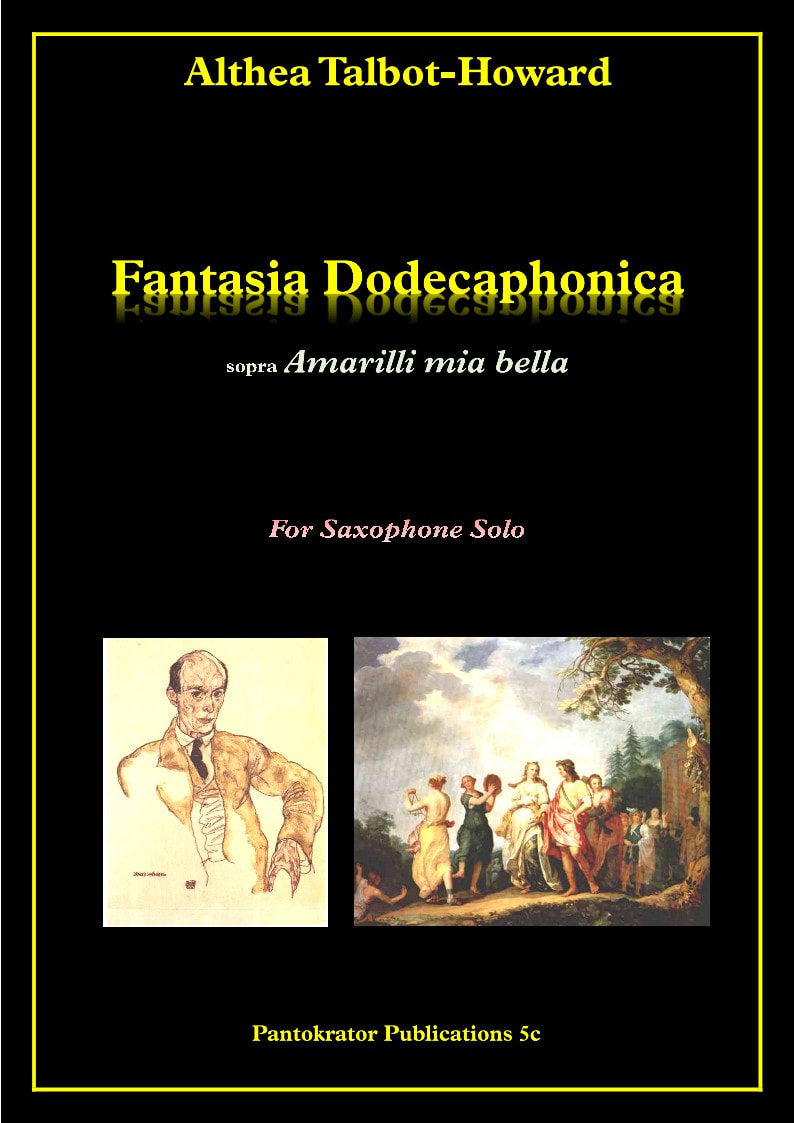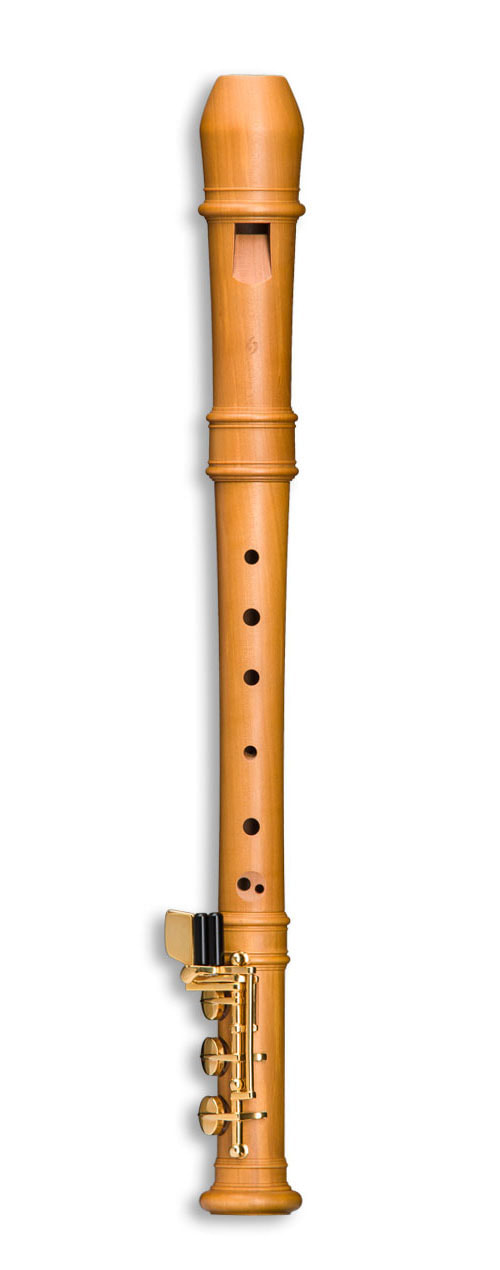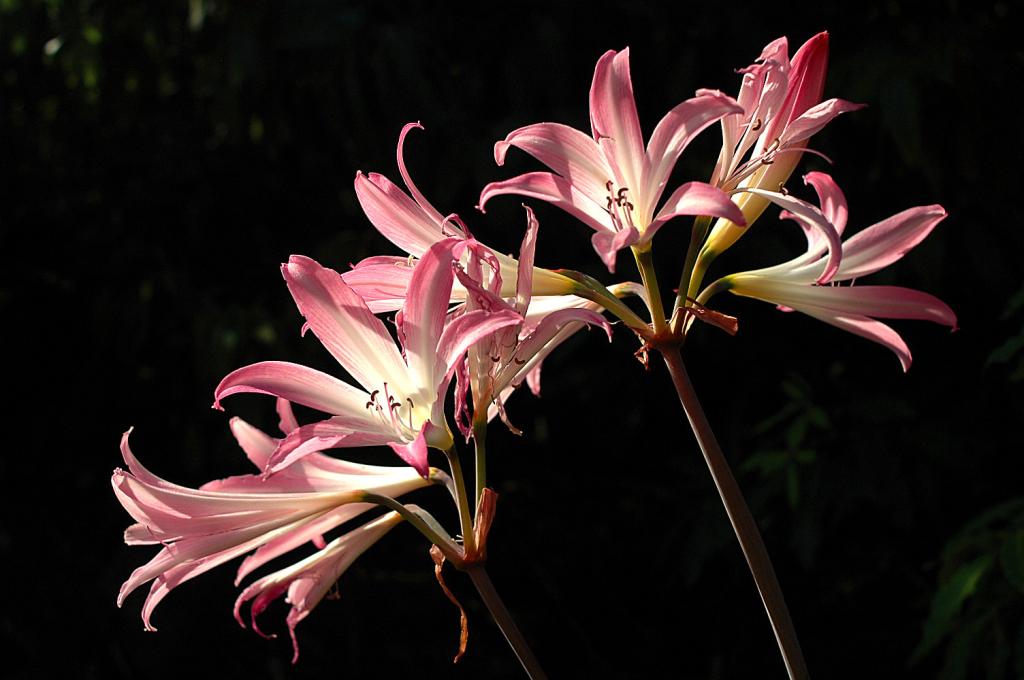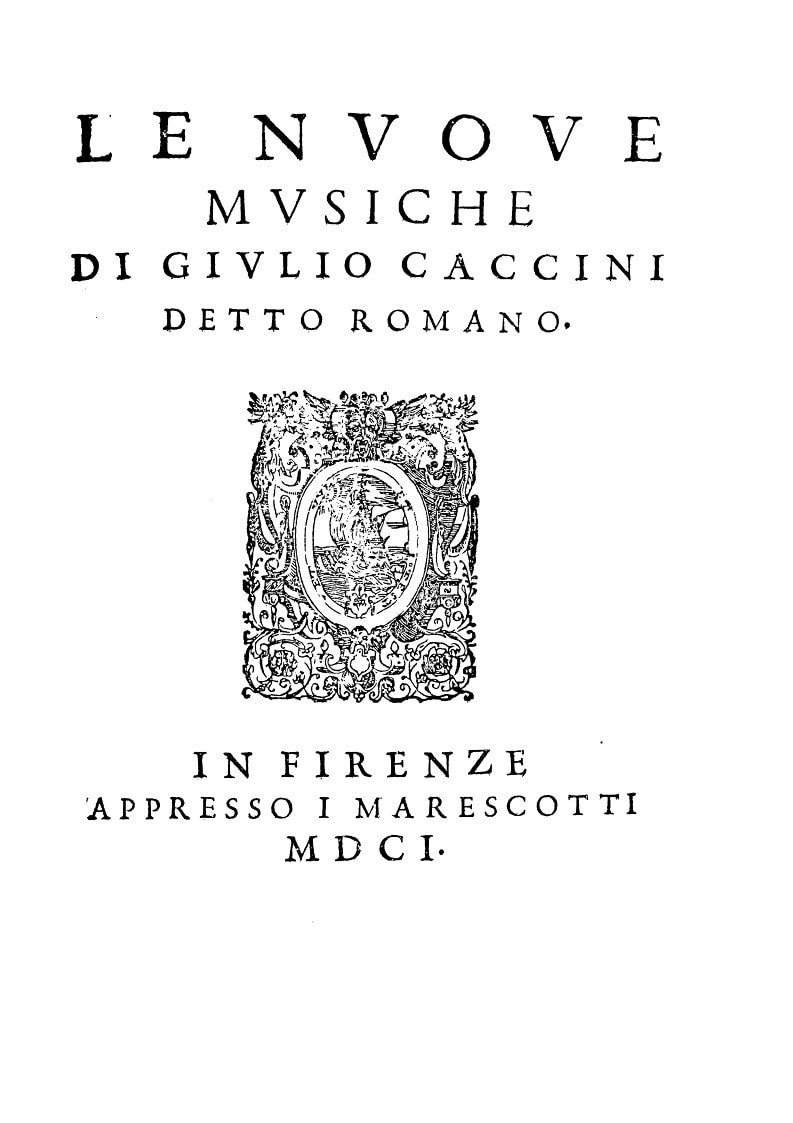"All notes are equal, but some are more equal than others..."
Australian Music Examinations Board: Professional Oboe Diploma Syllabus, from 2022
AMusA ~ List A
AMusA ~ List A
|
Introduction to Fantasia by the Composer
|
A stunning performance by American oboist Rachel Becker
|
Conor Bell and Amadea Topalli delight in their performances for Bassoon & Alto Sax
|
|
|
|
Fantasia Dodecaphonica
sopra 'Amarilli mia bella' for Solo Melody Instrument Level: Advanced Duration: 6'30" |
Scores Available:
D minor for Oboe, Violin or Modern Soprano Recorder with 'B' extension E minor for Alto Saxophone G minor for Bassoon Click on the images below, to purchase from June Emerson Wind Music G minor for Flute or Modern Alto Recorder Please send a message via the Contact Page |
Fantasia Dodecaphonica sopra Amarilli mia Bella (2018) is a piece that flows from change: change in my own professional life - and change in the manufacture of recorders.
In 2018, I decided to retire from oboe performance, owing to the continued deterioration in my left hand co-ordination. This related to the oboe's complex keywork, and had been slowly getting worse, for over a decade. I chose to return to playing the recorder - my very first instrument - in which LH4 is a resting digit, as opposed to having to play five keys, as is the case with the oboe! After forty years of double-reed focus, what had been happening in the recorder world, during the intervening years? I soon came across the Mollenhauer Modern instruments which are fully-chromatic, and have an extended range, descending to B on the soprano, and E on the alto.
In 2018, I decided to retire from oboe performance, owing to the continued deterioration in my left hand co-ordination. This related to the oboe's complex keywork, and had been slowly getting worse, for over a decade. I chose to return to playing the recorder - my very first instrument - in which LH4 is a resting digit, as opposed to having to play five keys, as is the case with the oboe! After forty years of double-reed focus, what had been happening in the recorder world, during the intervening years? I soon came across the Mollenhauer Modern instruments which are fully-chromatic, and have an extended range, descending to B on the soprano, and E on the alto.
|
In order to improve my technical facility on the recorder, I resolved to take the Trinity Grade 8 exam. Perusing the syllabus, there was nothing that took my fancy for the Group B solo piece, so I decided to compose my own (as Trinity permits). The previous syllabus had featured Van Eyck's Amarilli division, which brought to mind Caccini's famous monody, Amarilli mia bella, which I had long loved, from singing lessons of yore.
I was also thinking about Telemann' 12 Fantasias, which feature in the repertoire of several treble instruments: i.e. the Flute, Oboe, Violin & Recorder. I thought to myself, "You should compose a modern fantasia, with short sections or movements like Telemann's - but use a tone row" (which gives a modernist take on the concept). "Make Amarilli the underlying theme..." To be completely truthful, I did have several moments of amusement, as I composed it! However, performers have been playing it straight: to great effect. Please check out Rachel Becker's wonderful performance in the video, above. This extremely well-considered interpretation inspired the fantasia film I created around it. Perhaps that's an occasional mystery of composing? The composer goes through a development process of which the performers are unaware: and then the performers refresh and expand the composer's vision by bringing themselves to the piece in a really constructive way. That has been particularly the case for me, with this work. So, what's so amusing about Fantasia Dodecaphonica? Well, it's twelve-tone - 'but not quite as we know it'! I use the first five notes of Amarilli, and as soon as Caccini repeats an 'A', I move into a tone row. In order to bring order to the piece, I deliberately constructed two diatonic - and one quadrotonic - note groupings, thereby creating a strong harmonic foundation. Whereas serialism says, 'Thou shalt not repeat any notes', I deliberately repeated many of them - as you can hear in the section "...but some are more equal than others" - in homage to Orwell's Animal Farm , of course. |
There is a section which oboists - and others - will take for granted, but recorder players will love: low Bs galore, and a top C# with no knee! After that, the tone row goes into retrograde inversion; is followed by a Scherzetto; and then a transition is made to the final section. This is based upon the concept of Ysaÿe's Obsession, wherein he alternates his own material with Bach's, and the Dies Irae. In my piece, I have ornamented Amarilli according to the principles of the stile moderno - played legato - and have interspersed the phrases with staccato twelve-tone material.
The piece ended up well beyond Grade 8 level in technical difficulty, but that didn't matter, in the context of composing for an exam, where only a piece that was too easy would create a marking problem. Other features of the piece include a very brief reflection of Britten's Narcissus from Six Metamorphoses after Ovid; and aspirated trills, which refer to Monteverdi's Duo Seraphim.
Just to put people's minds at rest, I did get a Distinction in my exam - phew! And that brings me to all the different options for utilising this piece...
I often regard Fantasia Dodecaphonica as somewhat akin to Hindemith's Ludus Tonalis, inasmuch as one could set this on a diploma syllabus or as competition repertoire, for a left-field take on old compositional principles. The piece covers several bases at once. The final section contains straight stile moderno ornamentation; there is plenty of tonguing throughout the work; a good, supported legato is essential; there is a lot of dynamic variation, as the Mollenhauer instruments permit; and finger technique is challenged.
Alternatively, it can simply represent a change of timbre in a recital with piano, for example - or be used as an etude, alongside (or instead of) scales, for any student that is balking at scale practice.
However you decide to use it, I do hope that you will enjoy this musical extravaganza, which is as much a fantasia about the art of composition, as anything else. Please feel free to take it as seriously - or as humorously - as you please!
The piece ended up well beyond Grade 8 level in technical difficulty, but that didn't matter, in the context of composing for an exam, where only a piece that was too easy would create a marking problem. Other features of the piece include a very brief reflection of Britten's Narcissus from Six Metamorphoses after Ovid; and aspirated trills, which refer to Monteverdi's Duo Seraphim.
Just to put people's minds at rest, I did get a Distinction in my exam - phew! And that brings me to all the different options for utilising this piece...
I often regard Fantasia Dodecaphonica as somewhat akin to Hindemith's Ludus Tonalis, inasmuch as one could set this on a diploma syllabus or as competition repertoire, for a left-field take on old compositional principles. The piece covers several bases at once. The final section contains straight stile moderno ornamentation; there is plenty of tonguing throughout the work; a good, supported legato is essential; there is a lot of dynamic variation, as the Mollenhauer instruments permit; and finger technique is challenged.
Alternatively, it can simply represent a change of timbre in a recital with piano, for example - or be used as an etude, alongside (or instead of) scales, for any student that is balking at scale practice.
However you decide to use it, I do hope that you will enjoy this musical extravaganza, which is as much a fantasia about the art of composition, as anything else. Please feel free to take it as seriously - or as humorously - as you please!
Images: Arnold Schoenberg by Egon Schiele (1917); Amaryllis belladonna; The Marriage of Amaryllis & Mirtillo by Bloemaert (1635); Le Nuove Musiche frontispiece (1602)









